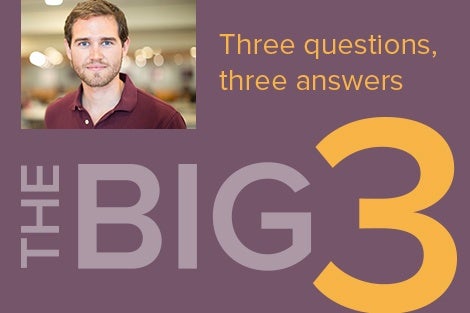May 4, 2017 — During an infectious disease outbreak, is it best to quarantine those who have been exposed to the disease — who may or may not be infected — or is it sufficient to send the person home for monitoring of symptoms? Corey Peak, a doctoral student in the Department of Epidemiology at Harvard T.H. Chan School of Public Health, recently co-authored a study with Harvard Chan researchers Lauren Childs, Yonatan Grad, and Caroline Buckee that compared the effectiveness of the two approaches. The paper was published April 11, 2017 in PNAS.
What inspired this work on emerging infectious diseases?
The Ebola response was confusing, especially when a nurse returning from West Africa was at first placed in a quarantine tent in New Jersey and later released for symptom monitoring at home in Maine. During this episode, we noticed a lack of scientific evidence guiding the policy choice between those two fundamental nonpharmaceutical interventions: quarantine and symptom monitoring. We quickly wrote an early version of this paper focused solely on comparing quarantine and symptom monitoring for Ebola control in high-resource settings, but later expanded the work to study several additional epidemic-prone pathogens.
Your work includes seven case study diseases, including Ebola, SARS, MERS, and influenza. What are you able to say about controlling these pathogens? What if the next pandemic is caused by something not yet on the radar?
Our results can be quickly put to use during an outbreak of one of the relatively well-understood diseases we included in our case studies. Furthermore, because we used a common analysis framework across the case studies, we can identify the specific characteristics of a pathogen that make quarantine, or symptom monitoring, a better option. For example, instead of comparing Ebola and SARS, we can ask more fundamental questions like: What is more influential to our decision, the length of time that someone is infectious, or a person’s ability to transmit the disease before showing symptoms?
During epidemics, policy-makers must make the best decisions possible using a limited, and changing, evidence base. We produced a ranked list of disease characteristics that are most important to policy decisions, and should therefore be prioritized for study during a disease outbreak of a truly unknown pathogen.
What recommendations do you have for policy-makers?
In addition to studying a diverse set of pathogens, we also wanted to know if the choice of nonpharmaceutical interventions depended on the resource investment of the setting. For example, symptom monitoring for Ebola was strongly recommended in the resource-plentiful United States, but quarantine was preferred in West Africa, where healthcare resources and personnel were stretched thin. Intuitively, we expect that there is no one-size-fits-all strategy for controlling emerging diseases, and our results agree.
We describe three general scenarios in which a decision-maker may find themselves. First, if quarantine is able to control a disease in a particular setting but symptom monitoring cannot, then the case for quarantine is simple and strong. Disease containment is almost certainly better than the alternative: exponential growth of the epidemic. The decision is more difficult, however, in a scenario where there are enough resources to contain a particular disease using either intervention, or in a scenario where neither intervention is sufficient. For both, any incremental benefit of quarantine over symptom monitoring must be carefully weighed against the added financial costs and restrictions on liberty due to quarantine. We provide policy-makers with a quantitative framework to aid decision-making and prioritization during an emerging epidemic.
photo: Susan Young Photography
